A new year and new projects and so many of our friends have said that they would like to get outdoors more with their kids, so I thought I would share a natural factual nature project that we did. We chose an area of land to monitor… we looked at the wildlife, mostly insects, reptiles and birds, and we learnt about the seasons form looking at the plant life and we got outdoors and had a lot of fun.

Most folk have kept a weather chart with their kids from time to time… and as you know that can be as simple as hot or cold, to very accurate weather data sourced from a weather station… how deep you go into it the details is up to you and your family. This kind of monitoring is exactly that, only it is a little bit more than just the weather. You can observe a bird feeder or a tree in your garden… or go further afield to a local park or even a nature park. The great thing about a Nature Watch is that it can be done by folk of all ages, as a team or on your own… you can create a photo album or keep a journal… the level of work and involvement is entirely up to you.
Read on, read on, down to our video…
Se7en Easy Steps to Nature Monitoring
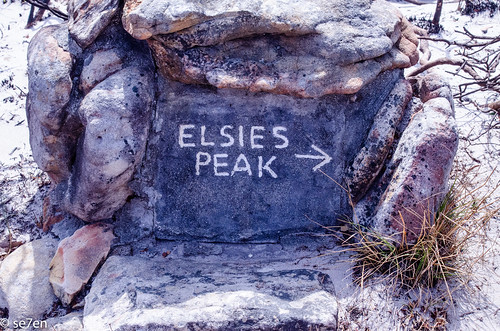
- Decide where your nature spot is going to be: You need to pick a spot that is easy to visit, every day, or each week or once a month… an area close at hand that you can get to without too much trouble on a regular basis. It can be a tree at the bottom of the garden, it can a hedge you walk past on the way to the library each week. Somewhere where you naturally visit in your rhythm of life is good. It is critical not to be too ambitious at this stage, imagine your spot in all weather, at the start of the day, at the end of the day… could you get to it after a long day of work? Think about it carefully. We chose to hike the mountain behind our house every month… but you can choose somewhere much easier if you like… even a pot plant is a spot of nature that you can observe and monitor.
- Decide when you are going to take your observations: At the start of the project we marked on the calendar, a day off each month to do the hike for project… it was set and unchangeable. We did not wait for good weather days, or the perfect day. It was a simply pack your backpack the night before and whatever the weather we would head out. We had some really hot days, we had some freezing days and we had some extremely windy days… we learnt a lot about endurance, and doing stuff when you really didn’t feel like it, and the joy of seeing the project through and having something to show for it was worth it. Not to mention many of the days that we thought were not good days turned out to be the best days.
- Decide What you want to Monitor – More or Less: You need to decide if you are just going to record everything you see, or if you are just going to look at birds, or plant life. We decided to take a few key photographs each month and then we looked at a different topic more closely… one month we looked at soil, another month rocks, one month the mountain was alive with butterflies so we dashed home to research butterflies. You can’t know exactly what you are going to look for until you are out there… nothing like saying you are going to look at only animals and then you don’t spot any.
Each month we took notes of:
- The weather – which you can get from your local weather station.
- Birds keeping a list of those we had seen.
- Reptiles – watching them closely and looking out for tracks of them.
- Insects – where hard to miss… but looking at them a whole lot more closely.
- Mammals – we saw traces of them like skat, tracks and so on. Only recently after a year and a half of hiking did we spot an actual mammal while we were hiking.
- Sounds – we had a spot we always stopped and where absolutely quiet for, where we just listened to sounds and kept a list of what we had heard.
- The shape of the river mouth across the bay.
Over the months we looked more closely at:
- The geology and different types of rock that we found on different parts of the hike.
- Sand… we took sand samples home and looked at them under the microscope.
- Path erosion and maintenance.
- Butterflies…
- Fynbos…
- Birds… we went from knowing zero, to more than handful… our interest is peaked and we will definitely be learning more.
- Clouds and Weather Patterns… and weather maps.
- Ocean currents and wave action,that we could view from above.
- Gather your Gear: My kids absolutely love gear… if a project has gear they are totally into it. We gathered materials to take with us: Maps, a sketchbook and pencils, binoculars, test tubes for tiny collections – like soil samples, a tape measure and so on. And we put together a shelf of reference books as well, so that we could look up things we had seen as soon as we got home.
- Gear Up and Get Out: We tried to keep our hikes absolutely the same each time, we left at the same time, we ate the same food, we packed our bags the same way… after a while we had refined to literally “get up and go.” The easier your monitoring spot, the easier it will be to actually get there. My kids knew it was a hike day the next day… bread was baked, water bottles filled and bags were packed so we could easily roll out. I tried to make sure that our days had no other activities on them so that once we were out there we could take our time… stop and photograph things of interest, stop and sketch… chatter about what we see, read a little bit and spend time with each other.
- Keeping Track of what we saw: As we hiked some folk kept lists and jotted down a few things and then on a follow up day later in the month we would take out all our reference books and have a nature journaling day. What began as one or two lines at the beginning of the project became pages of things that discovered in books, to enrich the things they had learnt from real live observations.
- The Photograph Collection: A big part of our project was taking photographs, we started by taking millions of photographs… and then reduced it to something a little more realistic… The same couple of photographs each time: one at the start of the hike, one or two landmarks special to us, one at the very top of the mountain and finally one over looking the bay. We always took photographs of anything in flower and evidence of animal life. And yes… this project finally got us to print photographs after years of not printing anything at all.
- Putting it all Together: At the end of last year we put all our pages and photographs together into a sketchbook. We added a few things that we had collected while hiking, the odd feathers and porcupine quills, as well as a couple of sand samples. And now we have a family sketchbook to remember the time we studied Elsie’s Peak for a year.
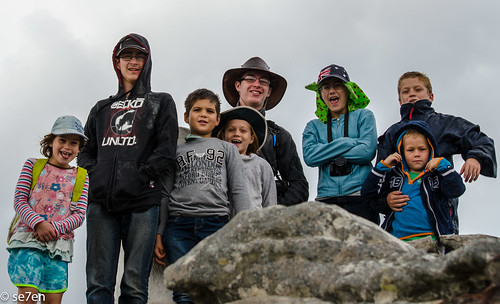
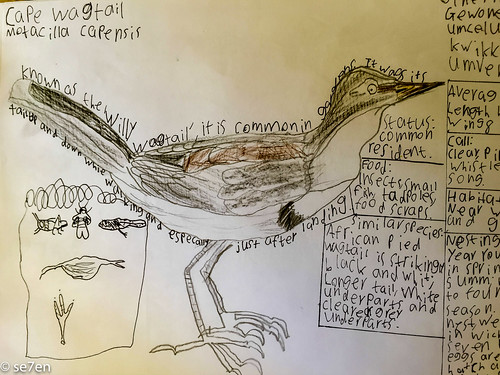
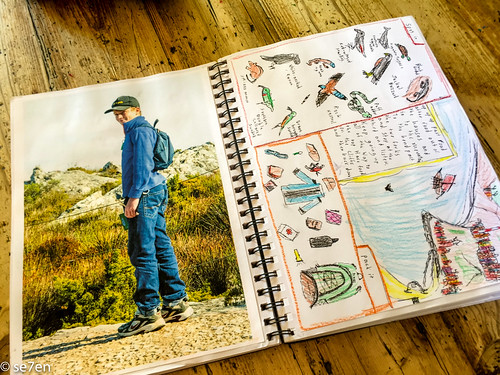
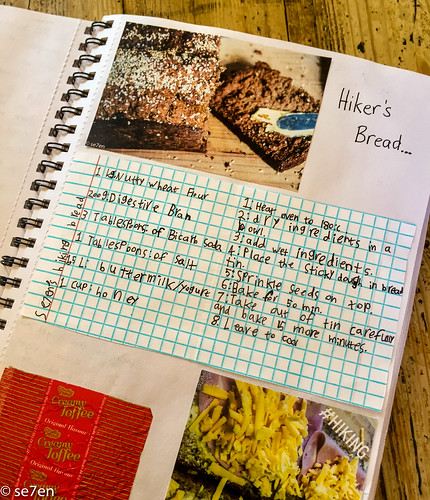

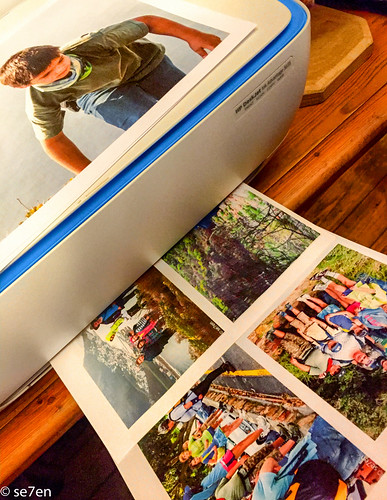
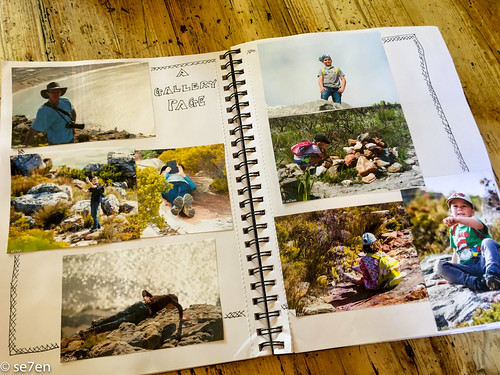
A Peak Into Our Monitoring Project on Elsie’s Peak
We made a little video presentation for our friends… (click on the arrow in the picture above, mum, and you will get to see it!!!).
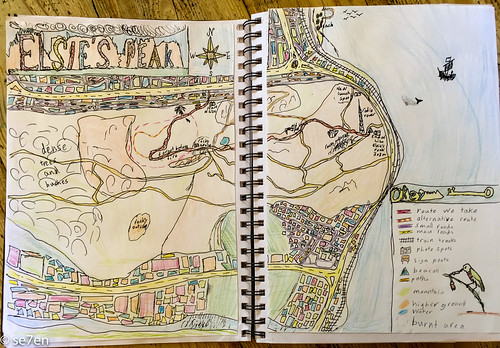
It turns out that we were able to begin our project just a couple of weeks after the March 2016 fires in Cape Town, so we were able to watch and observe the recovery of the environment, particularly the fynbos after the fire. There was a fire on our mountain in November 2015, and again in March 2016. We began our project really soon after that, at the end of March.
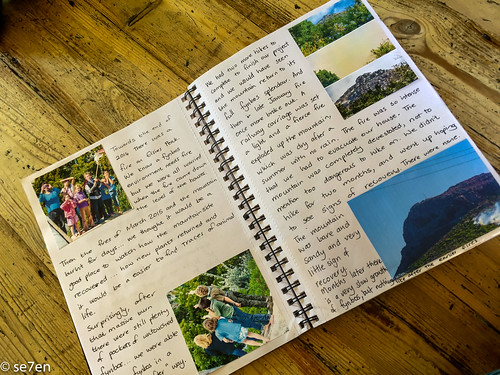
The mountain appeared to recover well, and each time we hiked more new plants were growing and it was exciting to see how the regrowth literally exploded. And then in January 2017 another fire occurred on the mountain and this time our hiking trail was closed for a fair while and we only went up again two months later. At this stage the mountain had not even slightly begun to regrow… the effect of another huge fire within the year had a devastating effect on the fynbos, months later there was little to no recovery. Now almost a year later, the growth is slowly returning and there is a good growth of ground cover and heaps of wild flowers in bloom.
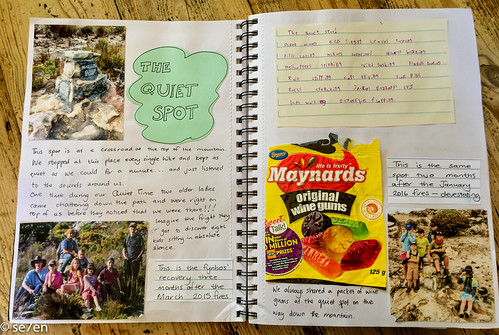
One of the most significant stops on our hike was at a fork in the path where we stopped every time, and were absolutely quiet, listening to all the sounds we could hear… just that moment of quiet in a busy world.

Apart from the hiking we spent a lot of time just looking and observing the world around us, and some folk always loved to draw. This was a project where hands on really did win the day, but there were some great days around the kitchen table where we researched what we had seen, using books that we have reviewed for Struik Nature.



And How The Gang Grows
From years back… When I first blogged this hike…
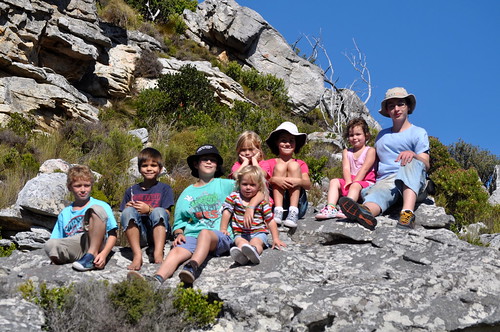
Then… from the first hike on this project…
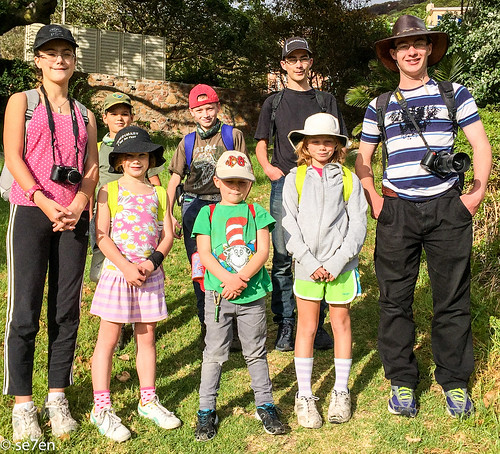
To the latest hike, last week

So there you go, a Nature Watch project is as easy or as complicated as you would like it to be. The best thing about a Nature Watch project is that folk of all ages and stages in life, can contribute in a real way to making the project a success. If you count acorns and spiders’ nests in a nearby oak tree, or if you document the life cycle of tadpoles in the local puddle… or if you climb the mountain behind your house, they are all great nature watch projects. May I suggest that you just start, grab a notebook and pen for keeping records and get out there. You can record from just one thing to twenty things, it doesn’t matter what you record… the point is firstly, that you get outdoors and secondly that you notice the ever changing world around you.
Thank you to HP printers, who loaned us a printer for review purposes. We grew our reference library with books from Struik Nature Publishers… if you are looking for great reference books in the South African Context, that we then look no further than Struik Nature publishers. Also, this is not a sponsored post and opinions expressed are as usual, entirely our own.

Brilliant!! Inspiring and fun. Awesome video!
Thanks Debbie, we really enjoyed this project and can’t see my gang giving it up anytime soon… unless we think of another spot we can monitor. But it doesn’t get more convenient that living on an actual mountain!!!
I’ve enjoyed following along on your adventures! We’ve tried to get a project like this off the ground a couple of times, but it was never a go. I think my plan of visiting weekly quickly led to boredom and monotony.
Loved the video compilation and hearing your voices! Thanks for the inspiration, gang – I think we’ll give it another go!
Your kids speak so well on the video – well done gang! It looked like an amazing project!
Thank you so much Jo, I think possibly the only way to get anyone to speak on camera is to just spring it on them… no time to think about who it is for or what it is about… they had a lot of fun making it, they had more fun watching it!!! Hope you have a great weekend!!!
Hay Christi, the idea I had was always much more involved and complicated than what we actually did and so never took off the ground. This was something that that we did once and then once again and “Oh, let’s go again.” All very casual, and I didn’t make them do anything the observations and things they discovered happened naturally. I also thought why couldn’t we head up the mountain each week… and very quickly realized I would be the only one and that was enough to conquer any of my over enthusiasm!!! Give it a try but make it totally low key and see how it goes… all the best!!!
Love this post and the video is fantastic! well done guys